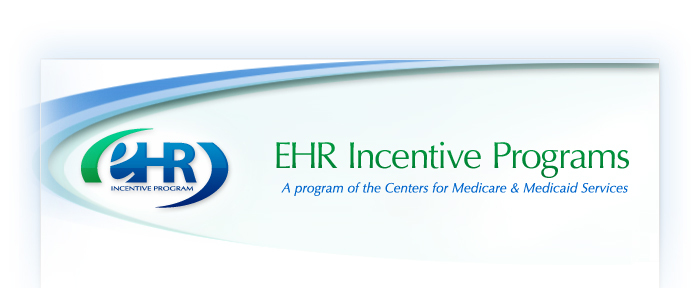by Naomi Levinthal and Anantachai (Tony) Panjamapirom
Republished from iHealthBeat.org
Eligible professionals (EPs) and eligible hospitals (EHs) participating in the CMS Electronic Health Record Incentive Programs must demonstrate meaningful use based on a number of metrics or measures. At its basic level, many of these measures are ratios: denominators are a number of patients seen over a given period of time (i.e., the reporting period), and numerators are information collected about those patients included in denominators. The quotient is the provider’s performance, of which a specified threshold must be met in order to receive incentive payments.
Our Discovery
It had always been our understanding (and we believe the entire industry’s understanding) that numerators are constrained by the reporting period selected within the denominator. Meaning, both denominator and numerator information are collected over the same period of time. However, the Office of the National Coordinator for Health IT’s Health IT Certification Program test data suggested the opposite: providers had time outside of the selected reporting period to increase the numerator for some percentage-based measures. We provided an analysis of those data to CMS because such a discovery could have a significant effect on providers’ success in meaningful use. CMS subsequently confirmed our findings through a recently published Frequently Asked Question.
The FAQ indicates providers have until the end of the attestation period (i.e., two months after the end of the calendar year/federal fiscal year) to collect data to increase numerators. For instance, EPs planning to attest in CY 2015 will collect data from Jan. 1, 2015, to Dec. 31, 2015, yet they may increase applicable numerators within the two months following the end of the CY, up to the attestation deadline. Along the same token, EHs in FFY 2015 have until Nov. 30, 2015, to collect data for the numerators.
For example, the Stage 2 View, Download, and Transmit (VDT) objective’s second measure requires 5% of unique patients to view, download or transmit their electronic health information. A patient seen or discharged could log in to a patient portal during or after the reporting period, and either action would count (i.e., increase the numerator).
To illustrate, during a given reporting period, 786 patients were seen or discharged and only 20 of them logged into the patient portal, falling short of the 5% threshold. However, of the remaining 766 patients, an additional 40 accessed the portal subsequent to the end of the reporting period, but before the attestation date. This brings the numerator to 60, or 7.6%, which exceeds the 5% threshold.
What It All Means
Such numerator logic can act as a prioritizing agent for providers’ work plans and increase their chance of meaningful use success. This clarification affects all meaningful use participants regardless of stage and year. Even in the year-long reporting period, providers have this “extra time” in the additional two months following the end of the payment year. However, the CMS clarification applies only to specified numerators, whereas the denominator is constant and always based on the selected EHR reporting period.
The “extra time” is surely welcome news to providers, but we caution two major considerations. First, there is possible downstream impact for certain measures. The first measure of VDT requires patient electronic health information be available online by a specified deadline (i.e., 36 hours after discharge for EH, and four business days for EP). Some of the required health information includes demographics, vital signs, smoking status and lab test results. Providers may jeopardize compliance for this measure if these data elements are not available by the deadline. On the flip side, those data element-associated objectives have higher thresholds than VDT alone, so providers may benefit from the “extra time” should performance lag.
Second, using the “extra time” outside the reporting period may not align well with clinical workflows. For example, during a second FFY quarter reporting period, an EH admits a patient on Feb. 14, 2014. Should the opportunity to create an electronic note not occur during the admission, the EH may do so at some point before Nov. 30, 2014 (the deadline for attestation).
As a result, providers should not delay when planning their implementation timelines and choosing their reporting periods. To the contrary, providers would benefit from the earliest possible reporting periods should their EHR upgrades and process readiness permit. Providers should view the “extra time” as a safety net to ensure they meet the long-term aspirations of meaningful use. The best-case scenario is always one where providers meet all the objective’s measures within the reporting period. However, if any of the percentage-based measures fail to meet the threshold, providers can take advantage of the “extra” time to improve their performance.
Impacted Stage 1 and Stage 2 Core and Menu Measures
Below are those objectives that allow “extra time” for numerator measurement.
Stage 1 Core Set Measures
1. Problem List
2. Medication List
3. Medication Allergy List
4. Demographics
5. Vital Signs
6. Smoking Status
Stage 1 Menu Set Measures
1. Drug Formulary Checks
2. Advance Directive
3. Clinical Lab-Test Results
4. Patient-Specific Education Resources
5. Medication Reconciliation
6. Summary of Care Record
Stage 2 Core Set Measures
1. Demographics
2. Vital Signs
3. Smoking Status
4. View, Download, and Transmit (Measure 2)
5. Clinical Lab-Test Results
6. Patient-Specific Education Resources
7. Medication Reconciliation
8. Summary of Care Record (Measures 1 and 2)
Stage 2 Menu Set Measures
1. Advance Directive
2. Electronic Notes
3. Imaging Results
4. Family Health History
5. Lab Result to Ambulatory Providers

